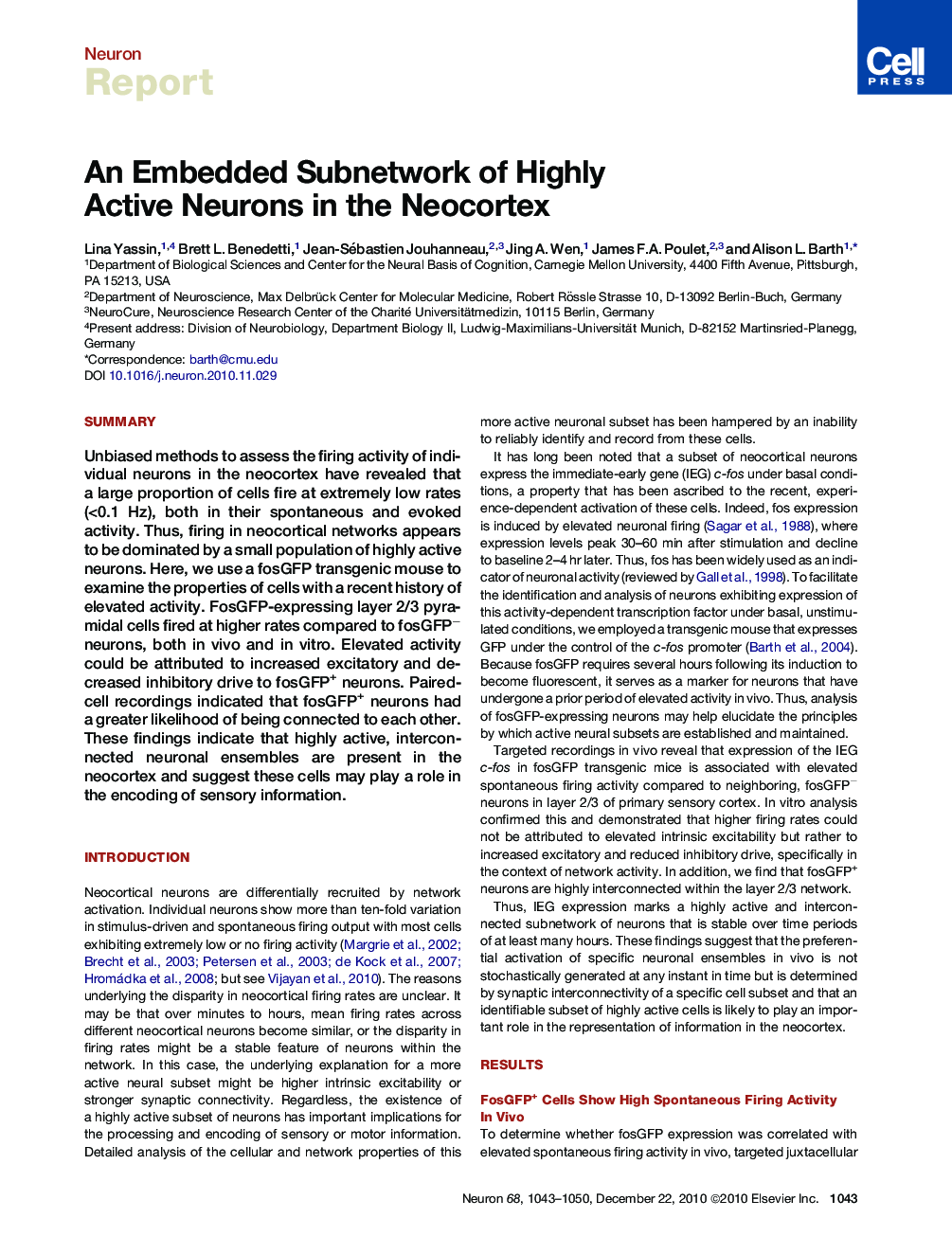| Article ID | Journal | Published Year | Pages | File Type |
|---|---|---|---|---|
| 4321854 | Neuron | 2010 | 8 Pages |
SummaryUnbiased methods to assess the firing activity of individual neurons in the neocortex have revealed that a large proportion of cells fire at extremely low rates (<0.1 Hz), both in their spontaneous and evoked activity. Thus, firing in neocortical networks appears to be dominated by a small population of highly active neurons. Here, we use a fosGFP transgenic mouse to examine the properties of cells with a recent history of elevated activity. FosGFP-expressing layer 2/3 pyramidal cells fired at higher rates compared to fosGFP− neurons, both in vivo and in vitro. Elevated activity could be attributed to increased excitatory and decreased inhibitory drive to fosGFP+ neurons. Paired-cell recordings indicated that fosGFP+ neurons had a greater likelihood of being connected to each other. These findings indicate that highly active, interconnected neuronal ensembles are present in the neocortex and suggest these cells may play a role in the encoding of sensory information.Video Abstract To view the video inline, enable JavaScript on your browser. However, you can download and view the video by clicking on the icon belowHelp with MP4 filesOptionsDownload video (11811 K)
► IEG expression demarcates a subpopulation of neurons with elevated firing rates ► fosGFP neurons fire more because of greater synaptic drive during network activity ► Fos-expressing neurons are highly interconnected
